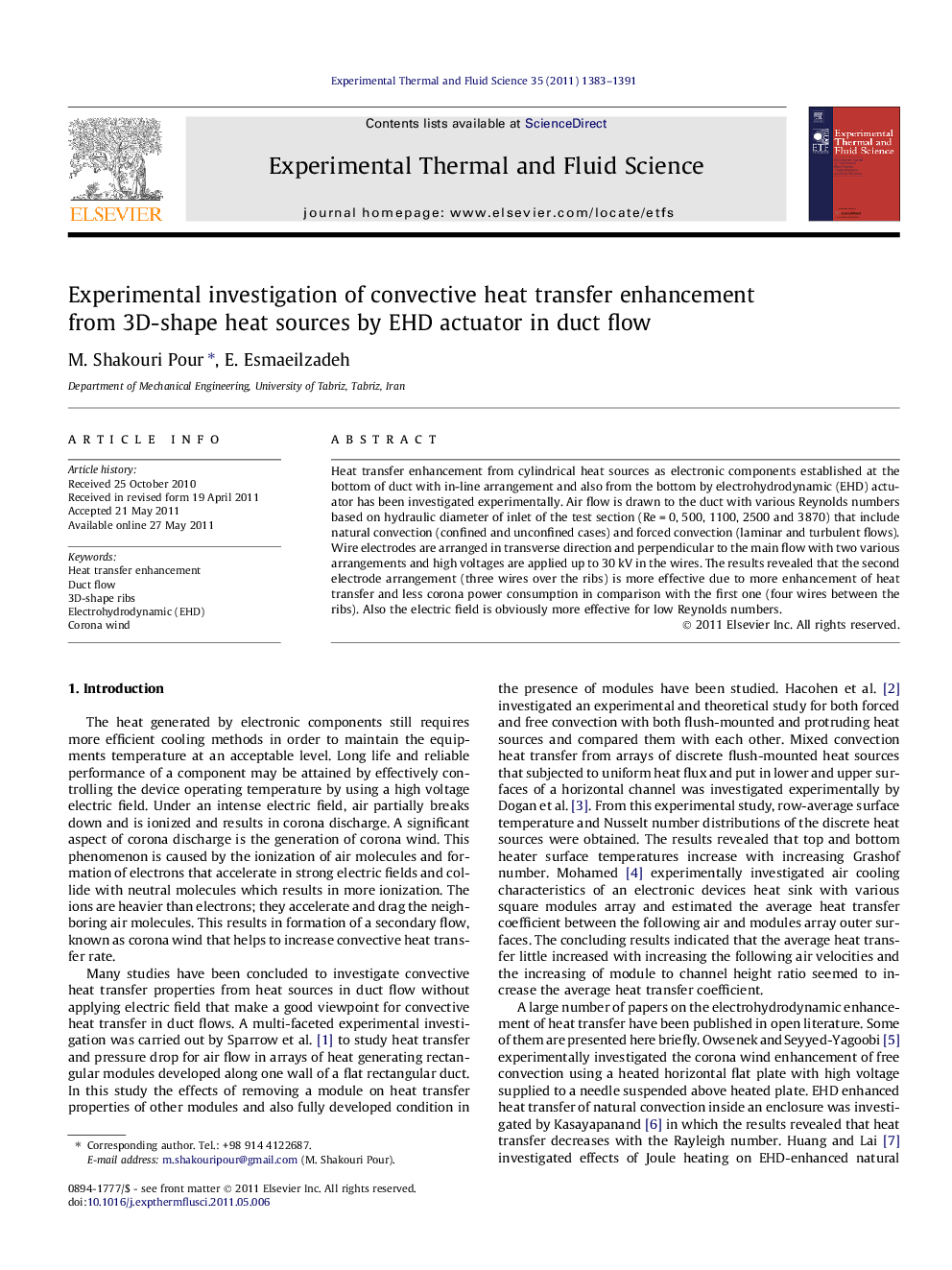| Article ID | Journal | Published Year | Pages | File Type |
|---|---|---|---|---|
| 651970 | Experimental Thermal and Fluid Science | 2011 | 9 Pages |
Abstract
Heat transfer enhancement from cylindrical heat sources as electronic components established at the bottom of duct with in-line arrangement and also from the bottom by electrohydrodynamic (EHD) actuator has been investigated experimentally. Air flow is drawn to the duct with various Reynolds numbers based on hydraulic diameter of inlet of the test section (Re = 0, 500, 1100, 2500 and 3870) that include natural convection (confined and unconfined cases) and forced convection (laminar and turbulent flows). Wire electrodes are arranged in transverse direction and perpendicular to the main flow with two various arrangements and high voltages are applied up to 30 kV in the wires. The results revealed that the second electrode arrangement (three wires over the ribs) is more effective due to more enhancement of heat transfer and less corona power consumption in comparison with the first one (four wires between the ribs). Also the electric field is obviously more effective for low Reynolds numbers.
Related Topics
Physical Sciences and Engineering
Chemical Engineering
Fluid Flow and Transfer Processes
Authors
M. Shakouri Pour, E. Esmaeilzadeh,
